Note: This is part two of a post that was originally published on June 12, 2015. Go read that one first, or you’ll end up as confused as I was when I wrote it. Here’s the link to The Map that Drove Me to Drink, Part I.
![]()
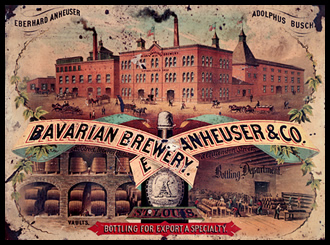 Here’s an astounding fact. In the year 1875, no fewer than 1,095 saloons were open for business and serving alcohol to a thirsty St. Louis population.
Here’s an astounding fact. In the year 1875, no fewer than 1,095 saloons were open for business and serving alcohol to a thirsty St. Louis population.
The exact number is probably even higher, but 1,095 is what I’m sticking with because it’s how many I counted in Gould’s 1875 St. Louis City Directory. Sounds like a tedious endeavor, but I even did it twice to make sure I wasn’t crazy.
Let that number sink in for a moment. In 1875, the land area of the city of St. Louis was about one-third of the size it is now. It would triple in size the following year when the city seceded from St. Louis County (the infamous”Great Divorce”), but when Gould’s 1875 St. Louis Directory was published, the city’s western border sat just to the west of Grand Avenue. With a population of about 325,000 people living within it, St. Louis was one very crowded town.
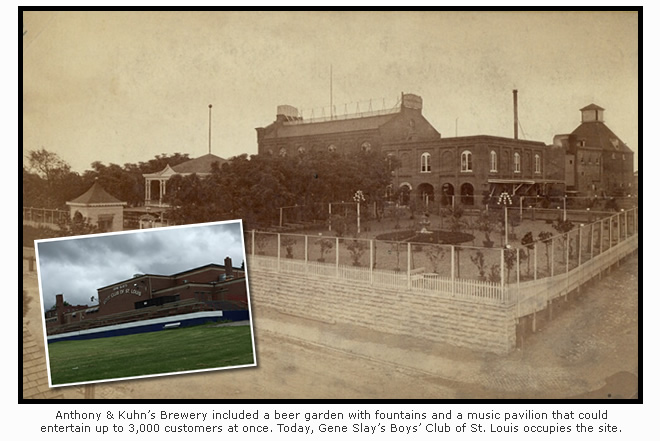
Before I get to all those saloons, I’d like to mention a few other gems that showed up in my fun brewery hunt. It is a marvelous thing to flip through a book that provides a comprehensive list of who and what existed in a city 140 years ago. When I did it, I found James Eads, our famous bridge builder, living at his stately mansion on Compton Avenue. I found General William Tecumseh Sherman listed with a residence on Garrison and an office on Locust. Adolphus Busch’s listing is at the brewery he’d soon co-own with his father-in-law Eberhard Anheuser. A young Joseph Pulitzer, making his way just a few years before he’d purchase the St. Louis Post-Dispatch, is renting a room at the Southern Hotel.
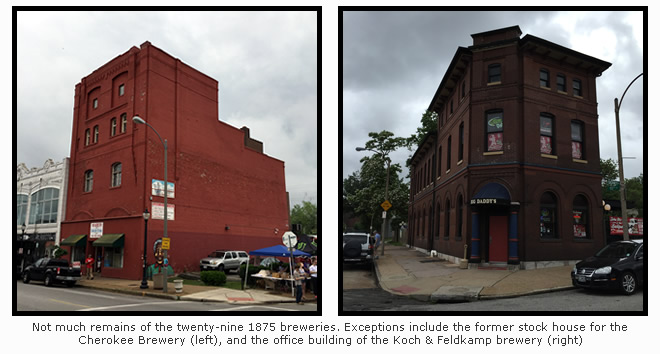
Along with the twenty-nine breweries St. Louis detailed in this (and the previous) post, St. Louis also contained fourteen malt houses and forty-three wholesale liquor dealers. Booze aside, St. Louis offered a kaleidoscope of people living and working, including twenty-six of them who could put shoes on your horse. Need a wig? Ten human hair dealers could get you the key ingredient, and one offered fake hair if the real stuff gave you the creeps. Better pack your long johns if traveling to St. Louis in 1875, because the city offered only three underwear manufacturers. Gould’s informed me St. Louis had two Turkish baths, four fresco painters, one submarine diver, fifty-nine dentists, and two draughtsmen. One of them, a talented artist named Camille Dry, resided in a room at 414 Olive.
I even found trades that had never heard of. I had no idea what a “thimble skein manufacturer” was, but apparently St. Louis had two of them in 1875. Assuming it had to be something to protect the fingers of a seamstress, I soon learned that if I asked for one at Waterman Brothers at 809 N. Main, I would have been handed some sort of sleeve for a wagon axle. Good to know.
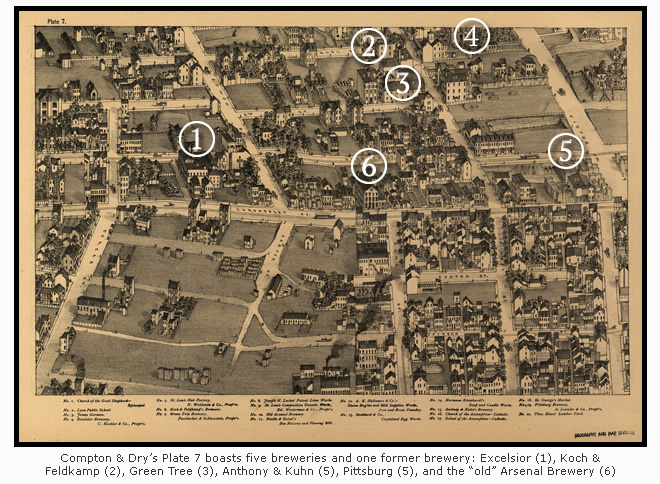
But let’s get back to that staggering number of saloons. To clarify, Gould’s seems to use “Saloons” as an all-inclusive heading for any type of drinking establishment, including beer gardens, hotel bars, taverns, and maybe even brothels. That’s really not fair to the brewers, because a “saloon” in 1875 was usually a much shabbier place to be than a pleasant-sounding “beer garden”. Either way, there’s no doubt a drink was never far out of reach. If my math is right, St. Louis in 1875 averaged nearly fifty-five saloons per square mile.
I always knew I was born in the wrong century. I can’t even get tonic water at the 7-11 near my house.
Anyway, of the twenty-nine breweries that existed in St. Louis in 1875, only one (very well-known) brewery still operates in 2015. Known as the Bavarian Brewery when Compton and Dry published their map, it was renamed the Anheuser-Busch Brewing Corporation just four years later.
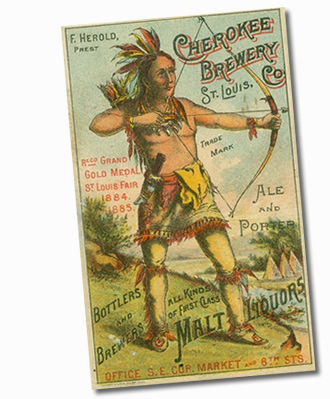
Anheuser-Busch remains because it’s one of the few American breweries that managed to navigate the dark days of Prohibition. And while Prohibition did knock out 1875’s other major St. Louis brewery (Lemp), many of the smaller breweries featured in this post didn’t even make it that far. It’s a topic for a future post, but one reason is that in 1889, eighteen St. Louis breweries were sold and merged into a British-owned syndicate known as the St. Louis Brewing Association. Ellis Wainwright, introduced in part one of this post, helped put it together and became the first president of the organization’s American branch.
Wainwright’s motive behind the SLBA was to create a conglomerate that could challenge the two major breweries that had started distancing themselves from the pack. In fact, many St. Louisans aren’t aware that the Wainwright Building, our famous skyscraper downtown, came to be because of beer. Ellis Wainwright had it built to be the headquarters of his new St. Louis Brewing Association.
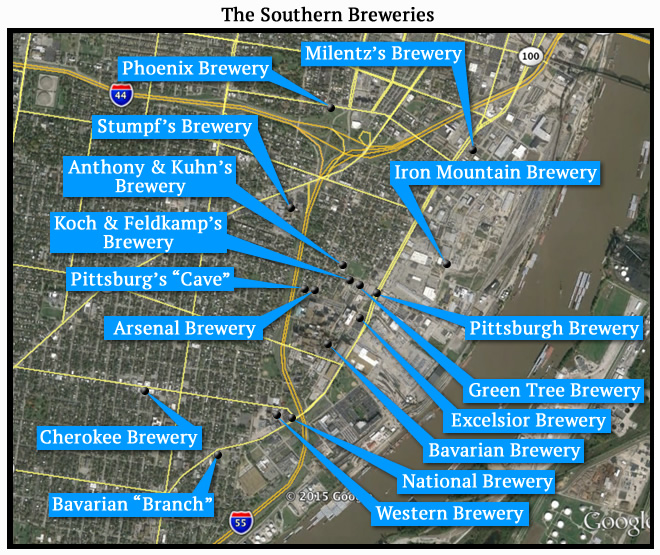
Fortunately for St. Louis, 2015 almost feels like it’s 1875 all over again. Breweries seem to be popping up all over the metro area, and the number may even challenge what we had in 1875. I’ve already considered how fun it would be to write a present-day brewery companion post to this one.
But before I get to that, I need to finish what I started. Here are the final fourteen “Southern” breweries identified on Compton & Dry’s 1875 Pictorial St. Louis.
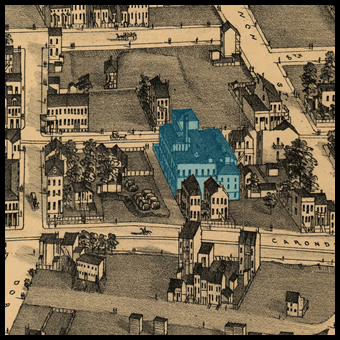
Excelsior Brewery – Plate 7
Later known as the American Brewery Company, the Excelsior Brewery is one of five operating breweries visible on plate 7.
It’s listed in the 1875 City Directory at 2818 S. 7th Street. According to St. Louis Brews, Excelsior ranked ninth overall in St. Louis beer production in 1874.
Today, the former site of the Excelsior Brewery is a parking lot for Anheuser-Busch InBev.![]()
Pittsburgh Brewery – Plate 7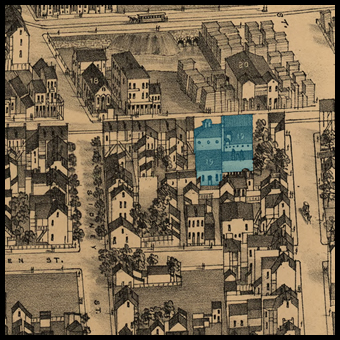
Pittsburgh Brewery is also drawn on plate 7, and it was located at 2506 Carondelet Avenue. Today, it’s the east side of Broadway between Sidney and Victor.
Interestingly, Pittsburgh also operated a branch facility known as “The Cave”. I found no additional information about it, but it’s clearly drawn and labelled on plate 27.
At any rate, Pittsburg stick around long. It disappears from city directories after 1876.
![]()
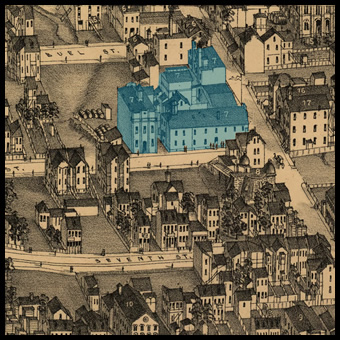
Green Tree Brewery – Plate 7
Another plate 7 brewery, Green Tree is listed the southwest corner of 8th and Sidney. Today, it’s at 9th and Sidney.
Green Tree Brewery was originally created by Joseph Schnaider (who went on to open Chouteau Ave. Brewery) and Max Feuerbacher (whose former home still stands a short walk from the brewery’s former location).
In 1875, It’s Feuerbacher and another man named Louis Schlosstein who are running Green Tree, and it was one of the bigger breweries in St. Louis at the time.
Green Tree’s former location gives us a pretty good story. Back in 1982, Anheuser-Busch started digging around Green Tree’s former site and unearthed the cellars to the brewery, complete with an entryway to the caves beneath. Before filling everything in and converting it to a parking lot, they placed a time capsule inside. Appropriately, it was in the form of a keg.
![]()
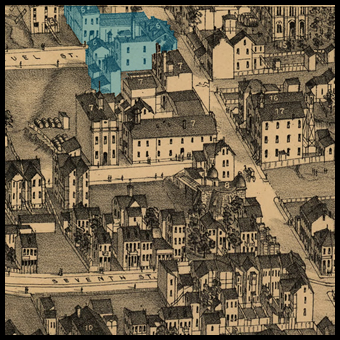
Koch & Feldkamp’s Brewery – Plate 7
Also on plate 7, in 1875 Louis Koch and his partner Ferdinand Feldkamp operated a small brewery just to the west of its larger neighbor, the Green Tree Brewery.
The 1875 City Directory lists it at the southeast corner of Sidney and Buell. Today, it’s Sidney and 10th.
The office building of Koch & Feldkamp’s Brewery still stands today. Appropriately, it’s now the home of a bar named Big Daddy’s.
![]()
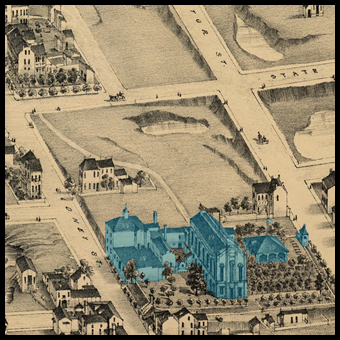 Anthony & Kuhn’s Brewery – Plate 27
Anthony & Kuhn’s Brewery – Plate 27Anthony & Kuhn’s Brewery is also visible on plate 7, but the entire complex is better viewed on plate 27.
Anthony & Kuhn’s Brewery is listed in the 1875 City Directory at the northwest corner of Sidney and Buell. Today, Gene Slay’s Boys’ Club occupies the same site on 11th Street between Sidney and Victor.
In its day, Anthony & Kuhn’s Brewery featured an enormous beer garden that could entertain up to 3,000 beer drinkers at once.
![]()
Phoenix Brewery – Plate 39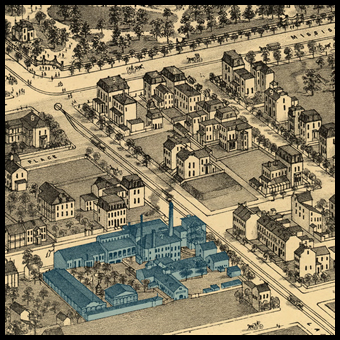
Drawn on plate 39 of Pictorial St. Louis, the Phoenix Brewery was located on the south side of Lafayette Avenue between the exits for I-55 and I-44. Lafayette Park can be seen just a couple of blocks to the northwest.
The Phoenix Brewery isn’t listed in the 1875 City Directory. Once one of the largest breweries in St. Louis, it had slipped out of the top ten by the time Compton and Dry published Pictorial St. Louis. It even closed for a time in 1875 (explaining its omission from the city directory) before re-opening later in the year.
![]()
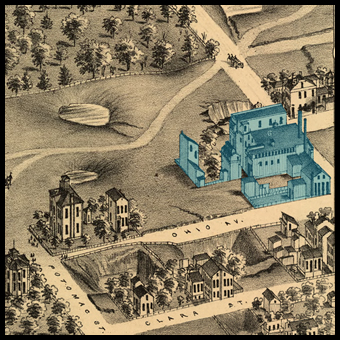 Cherokee Brewery – Plate 34
Cherokee Brewery – Plate 34Located at the southwest corner of Ohio and Cherokee, the Cherokee Brewery is drawn on plate 34.
As the authors of St. Louis Brews point out, The Cherokee Brewery was unique in that it brewed ale as well as lager. Furthermore, their lager was only available in bottles, while the ale varieties were available in draft.
Today, the stock house of the Cherokee Brewery still stands in an active south St. Louis neighborhood.
![]()
National Brewery – Plate 11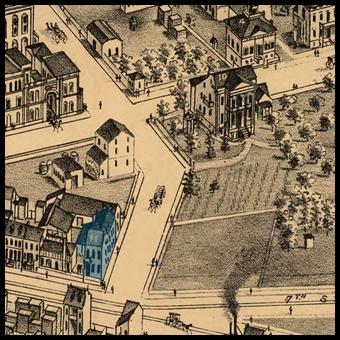
The National Brewery was a small operation that operated in the shadow of the massive Lemp complex that towered just to the east.
Although it’s clearly drawn and labelled on plate 11 of Compton and Dry, it doesn’t appear in city directories.
It it stood today, National Brewery would sit right on top of I-55 in south city. On plate 11 of Pictorial St. Louis, the DeMenil Mansion (alive and well today) can be seen just to the north.
![]()
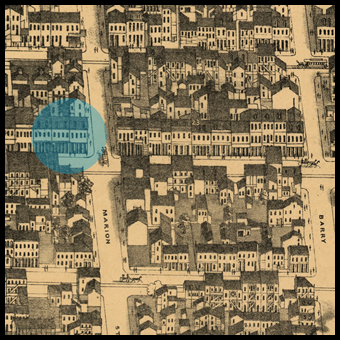
Milentz’s Brewery – Plate 6
Almost every one of the southern breweries are clearly drawn and labelled in Pictorial St. Louis. The Milentz Brewery is the lone exception.
A weiss brewery, it was run by a woman named Laura Milentz who took over for her husband who died in 1873.
It’s listed in the 1875 directory at 1525 Carondelet. It likely occupied one of the small structures drawn at the intersection of Carondelet (now Broadway) and Marion Street. If I’m right, a bar named Cuz’s now occupies the site.
![]()
Arsenal Brewery – Plate 27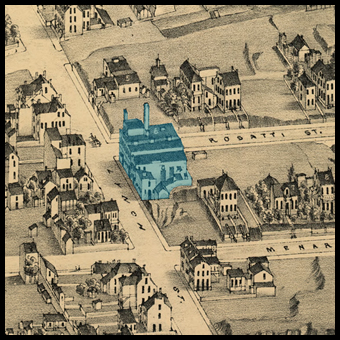
Arsenal Brewery is listed in the 1875 City Directory at the northwest corner of State and Lynch. It was actually at the northeast corner, and in 2015, State is now named 12th.
The facility was new in 1875, and Arsenal Brewery has the distinction of having its “old” facility also drawn and labelled in Pictorial St. Louis. That structure is drawn on plate 7.
Today, the former brewery location at 12th and Lynch is a parking lot.
![]()
William Stumpf’s Brewery – Plate 27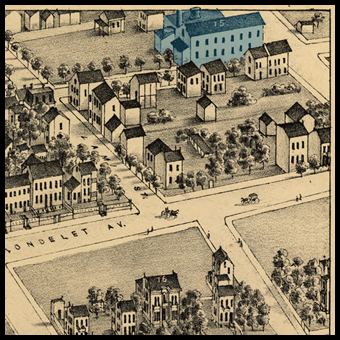
Another location that benefited from the caves beneath it, the Stumpf brewery is drawn and labelled on plate 27 in Pictorial St. Louis.
That corner is an important one in the history of St. Louis brewing. The former Falstaff Plant #10 now stands (barely) on the site. Sadly, it’s in a severe state of disrepair.
![]()
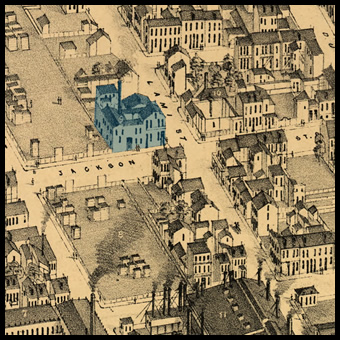 Iron Mountain Brewery – Plate 8
Iron Mountain Brewery – Plate 8
Drawn on plate 8, the Iron Mountain brewery is listed in the 1875 City Directory at 2301 Jackson. Today, it would sit on 3rd Street between Barton and Shenandoah.
The Iron Mountain Brewery was a small operation, and 1875 may have been its last. It doesn’t appear in any city directories after 1875.
![]()
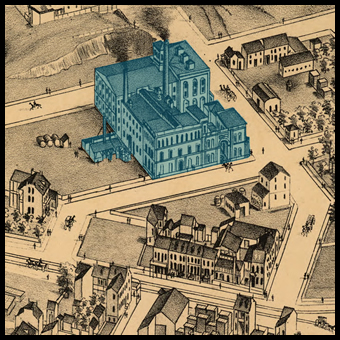
Western Brewery – Plate 9
The famous Lemp Brewery, known in 1875 as the Western Brewery, is drawn on plate 9 in Pictorial St. Louis, and it comes with many firsts.
The Lemps were the first to lager in St. Louis, the first to utilize the caves beneath the city for climate-controlled storage, and the first in overall beer production in 1875.
The site on Cherokee was originally used as a storage facility. In 1864, the entire operation was moved to the site and housed in a massive new brewery complex that still stands today.
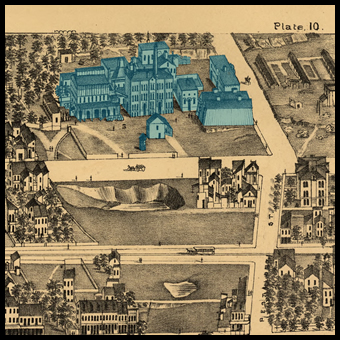
Last but certainly not least, the Bavarian Brewery, now known as Anheuser-Busch InBev, is drawn at the top of plate 10 in Pictorial St. Louis. In 1875, Eberhard Anheuser’s brewery trailed only the Western Brewery in overall beer production.
And like the Western Brewery, the story of Anheuser-Busch deserves much more than just a few meager sentences. I’m sure both breweries (and a few others) will get more than their fair share of attention in this blog in the years to come.
![]()
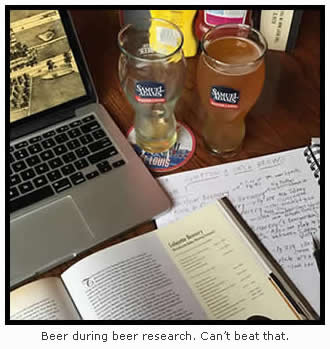 To close out my Pictorial St. Louis brewery hunt, I knew all along where I’d go to get a celebratory beer. I didn’t mention it earlier, but Koch & Feldkamp’s Brewery, found on plate 7 of Compton and Dry’s Pictorial St. Louis, has quite a claim to fame. I learned about it a few years ago from a good (and very knowledgeable) friend at Landmarks Association of St. Louis. In fact, many of the southern breweries were easy to find because he simply showed me where they were.
To close out my Pictorial St. Louis brewery hunt, I knew all along where I’d go to get a celebratory beer. I didn’t mention it earlier, but Koch & Feldkamp’s Brewery, found on plate 7 of Compton and Dry’s Pictorial St. Louis, has quite a claim to fame. I learned about it a few years ago from a good (and very knowledgeable) friend at Landmarks Association of St. Louis. In fact, many of the southern breweries were easy to find because he simply showed me where they were.
Anyway, most people today are familiar with the “Boston Lager”, known as Samuel Adams. It’s available just about everywhere, including Big Daddy’s Bar, which occupies the building that used to be the offices of the Koch and Feldkamp Brewery. Sam Adams is on tap there (it’s what I ordered), and it’s easy to understand why. The St. Louis brewer Louis Koch created it there over 140 years ago.
That’s right. Samuel Adams is the “Boston Lager”, but it’s a St. Louis recipe. The Samuel Adams website even tells the story for us (well, it used to). Back in the 1970’s, Louis Koch’s great-great-grandson Jim Koch found the recipe in a trunk in his father’s attic. He resurrected it, launched a fledgling brewery with it, and the rest is brewing history.
But like so much else, it’s St. Louis brewing history.
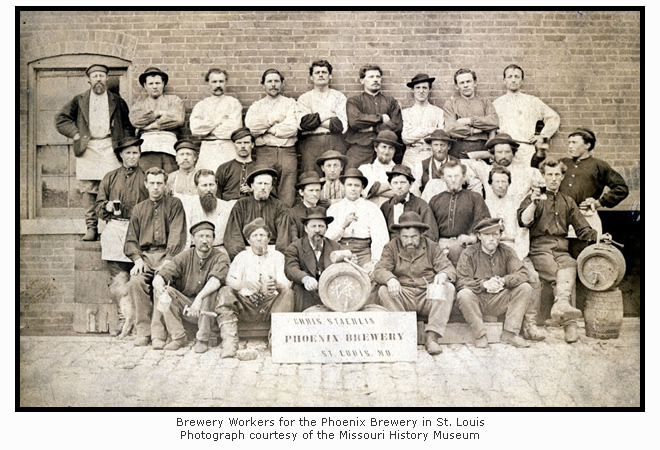
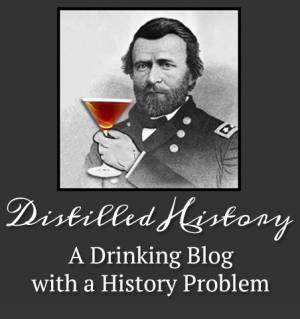
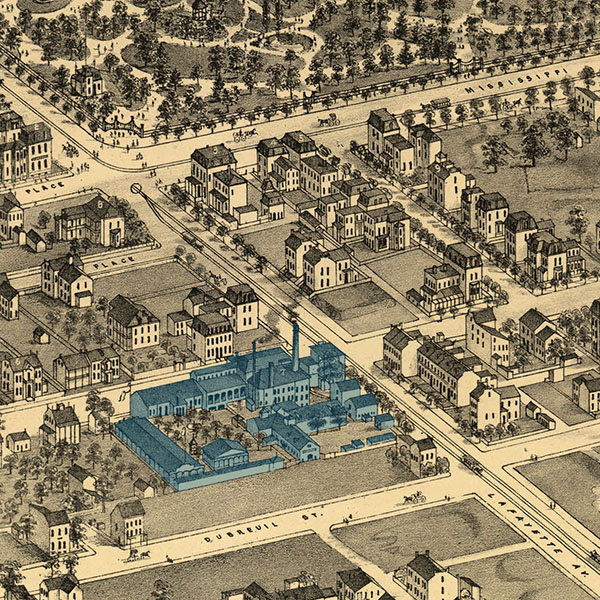
As I am a St. Louis native (66 years young), I found this blog extremely interesting. I have often remarked that I found it extraordinary that in many neighborhoods there is still a bar on almost every corner or evidence that one had existed. This blog answers many of my questions. Looking forward to more info on similar topics.
Excellent post! Keep writing and drinking, and I’ll keep reading and drinking. Your research is fascinating. . . . and rewarding in the end–cheers!